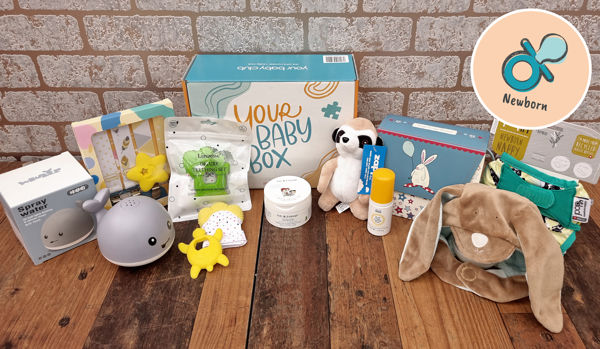Breastfeeding my son has been one of the most rewarding yet hardest things I have ever done in my life. It was a choice I made while I was pregnant and I wanted to persevere and give it my absolute best, with the aim of feeding him for at least six months if it was possible. But then when we hit that milestone and after that other milestones too, I just kept saying “I will now stop when baby no longer wants it”.
Don’t get me wrong, it certainly was not the easy way of feeding my baby and I think that women who do breastfeed give up a lot, and this should be recognised a bit more. Let me start at the beginning and explain how and why I chose to carry on, in the face of pain, problems and less than four hours sleep for many a night. And why I’m still breastfeeding right now, in fact, while I type this story!
It had been an uphill battle to establish the breastfeeding and the routines to begin with. We were plagued with problems from the outset but because I was determined I continued on. Our son developed jaundice after birth which required a lengthy stay in hospital in a UV incubator and I breastfed or pumped every ninety minutes for the first two weeks of his life. Tough was an understatement because my milk was still only just coming in when we realised our son had some problems. So I ended up with sore and cracked nipples from the constant feeding one way or another. The lack of sleep and the worry caused me to get rundown too. I remember filling myself with food and drinking litres of water at the beginning, it really did help get me through. And I have to thank the midwife team and breastfeeding coordinators at my local hospital too for their support and kindness.
When we eventually went home to stay our son was cluster feeding, we encouraged this to get him to gain some weight. It was incredibly hard, with sleep time being few and sitting down time aplenty, yet I wouldn’t change the bond it allowed for us to grow. So many hours were spent just gazing at one another; sleepy feeding at all hours and burping sessions too! We were doing so well, our little boy was slowly gaining weight and we had turned a corner. Then one day as we started to feed I got pains, and these increased over the course of the day, and it turned out to be an infection that I knew nothing about. Let me tell you about Ductal Thrush.
Lots of doctors misdiagnose this ailment as Mastitis when in fact it’s Ductal Thrush. And if you get a misdiagnosis as I did with this, then you can actually make your infection so much worse! Let me explain a bit more about my run-ins with the dreaded Ductal Thrush and then I will show you a list of the symptoms and give you some facts!
My son was only seven weeks old when I got some bizarre pains as he latched on to feed. Previously my breasts had been engorged and that was painful, my nipples had been sore and cracked and they had also been painful, but this was different. It felt as though my son was drawing my milk out through the nipple, and as usual, you can feel that gentle pull, except this time it was as though my nipple was being shredded from the inside out by glass shards. Yes… glass shards. It’s the best way I have of describing it, and it’s incredibly painful. At times during my experience with Ductal Thrush, I would even say it hurt me more than the contractions of labour.
Now I’m pretty good with pain, I had my son naturally on just a little gas and air, and even my midwife took that off me almost ninety minutes before he was born to get me to focus more… so when I was tearing up and gritting my teeth through baby latching I knew something was not right. My son and I had such a bond already, but he was feeding frequently, usually fourteen to fifteen times every twenty-four hours. The pain of Ductal Thrush lasts for around a minute or two into the feed, and then different pains occur after baby has fed and you have your milk let down. That pain is a dull ache felt right in the depths of the breast tissue, mine was so deep it radiated around my back under my armpit.
I managed to get in at my GP quickly, the next day in fact. But I had hardly any sleep because of the pain during and between feeds that I was exhausted when I got there. The doctor took a look and listened to my symptoms before telling me that it was Mastitis. Having read about this condition and also having been given leaflets on it in hospital because it’s quite common in new breastfeeding mums, I just didn’t think he was correct. I went home with a box of antibiotics, and despite my reservations, I took them for four days. The GP said that after forty-eight hours I should begin to feel better and that the pain would get better. In fact by the fourth day the pain had almost doubled and I was crying my way through every single feeds. I was biting down on one of the baby teething rings we had bought for him just to get through the initial latch, and if he let go and had to start all over again I would literally be sobbing it was terrible.
After this night of debilitating pain, I decided to call the breastfeeding coordinator number that I had been given, and they gave me some advice. They also sent a member of the breastfeeding team to my house to check me over when I described what a time I was experiencing. They checked to make sure baby was latching properly, and once I had told them about the pain they instantly knew it was Ductal Thrush and not Mastitis. I remember exactly how the conversation went, and how exhausted I felt. She also looked inside my son’s mouth because you can often see the thrush in baby’s throats and on their tongue. I wasn’t aware of this until I was told, but it’s white and often sticks to babies tongue and gums, and it was evident towards the back of my little one's mouth.
“You need to go back to your GP with this new information, and you need to stop taking those antibiotics because that type is feeding the infection not helping to get rid of if”.
I was devastated, it was now worse because of the misdiagnosis and my son was suffering too, I had to phone the GP up and ask to see them again. When I told him what the breastfeeding team had said he needed to look it up on his computer and find out what he needed to prescribe me instead. Not only did we require tablets but we also needed a nipple cream for me and a gel for my son for his mouth. They weren’t an everyday antibiotic, and my local pharmacy required a minimum of twenty-four hours in order to get them in. So I waited, my husband picked up the prescription for me the following afternoon, and it was three days for them to enter my system and begin working.
During all of this time, I continued feeding through the excruciating pain, and my poor son kept looking up at me wondering why I was so upset, his mind must have been so confused at the time, since I had always enjoyed our feeds and bonding since getting over the initial first pains and soreness that comes with new mothers feeding. Now he saw it as something that was upsetting me so I tried to not show him how hurt I was feeling and tried to smile down at him for reassurance.
But I was now in pain for minutes at every single feed, and this continued for a further week before it finally began to improve. It was tedious, I had to apply this fungal cream after each feed but remove some of it if it hadn’t been absorbed into the skin when he next wanted to feed. I also had to rub the gel onto his gums after each feed was over. I also had Lanolin for my nipples which were so sore from all the contact. But the antibiotics were finally starting to work, and I had a two-week dosage of tablets which I thought was fine. It wasn’t. Due to it being so bad and imbedded so far into my breast tissues I had to return to the GP and get a further repeat prescription of it. In total, I was medicated for a whole six weeks, and it was a concern with my son being so young and the medication passing on to him.
For me Ductal Thrush at times was more painful than giving birth, and any mother who has had a severe case of it like I did will no doubt back me up. I’m not exaggerating with the pulling your milk through shards of glass description, or the burning sensation that radiates through your entire chest and into your tissue and muscles well into your back. I look back now and it’s a bit of a blur, I wonder how I even got through those weeks, but I did. I remember having to bite down on that teether at our three o’clock feed to stop my crying waking up the neighbours.
The GP even sent me to the hospital during my second dose of antibiotics to have an ultrasound scan on my breast tissues, to make sure nothing else was going on, luckily there was not and I was able to return to feeding my son. Although this was not before I was asked if I wanted to stop feeding him. When the thrush reoccurred without the tablets, well it never really left thinking back on it now, it was just starting to improve when I ran out of the medication that first time and therefore it flared up again. But I recall telling every member of the health department that I came across, “No, I have worked too hard to establish feeding I want to continue”. I knew that I could beat this and carry on, not just for my son but for my sake as well.
As a sufferer of Endometriosis, I’m currently at Stage Four, so it was more beneficial to me to continue breastfeeding as long as was possible. When I explained the benefits most people could see why I wanted to maintain the feeds. But it was important to me because of how much I had already been through to even get to this stage of breastfeeding. For those few weeks that were debilitating and exhausting it felt never-ending, but then we turned a corner, I woke one morning and the pain was there but bearable. I didn’t see the Ductal Thrush again, and if I never do again it would be all too soon. It affected the supply in my right breast, so much so that the left side became dominant and grew to almost double the size. I live with the constant lopsided reminder of how infection can really change your body. But I am a stronger breastfeeding mother because of what I have been through.
So many mothers are misdiagnosed with Ductal Thrush and it can have implications as well as creating painful feeding. Please speak to your local breastfeeding team if you are at all concerned that your GP might not be fully understanding of your needs. Get them to check inside your baby’s mouth because this is also an indication of where thrush lies. As a mother who has chosen to breastfeed you should be made aware of what Ductal Thrush and Mastitis are, so that you can make an informed decision if you should contract either of them.
Let us now go through the differences between the two of them. Ductal Thrush occurs when an infection grows amongst the breast tissues and is usually spread and passed from mother to baby and back again. Thrush can be an infection that occurs in several different parts of the body. Evidence of it in the breast can sometimes be seen on and around the nipple, or within the baby’s mouth. Baby needs to be treated at the same time as the mother and it usually affects both of the breasts, but usually one side more than the other. Mastitis occurs in the breast when the ducts of tissue become blocked, it is usually associated with engorgement or when your baby is not feeding effectively and draining every part of the breast. Mastitis is accompanied with red, swollen and hot skin, then pain and redness that expands. Both of these conditions are serious, Mastitis more so due to the nature of the infection.
As explained on the NHS website, here are some more facts about Mastitis as a condition.
- Mastitis only usually affects one breast and women feel unwell.
- Symptoms develop quickly and can include a red, swollen and painful area of the breast.
- Usually there is a lump or hard area to the breast tissue that doesn’t go after feeding baby.
- There can be burning pains associated with feeding your baby or occurring continuously.
- Discharge from the nipple is common including white or blood-streaked.
- Flu-like symptoms are the normal experience for people with this infection, aches and pains, fatigue, going hot and cold, running a temperature and a having a fever.
Mastitis in breastfeeding women is known as Milk Stasis, it is caused by a build-up of milk that has not been drained properly. This occurs when the baby hasn’t got a good enough latch, there is an abundance of milk and baby isn’t feeding effectively or when the baby is feeding infrequently or misses a feed. It is an infection most common in the first twelve weeks of breastfeeding; however it can occur at any time for breastfeeding mothers who have a change in their usual routine for example. Mastitis occurs when the build-up of breast milk that has become blocked becomes infected with bacteria. If the bacteria are not treated quickly then the milk can turn into pus in the form of a breast abscess which may then need to be surgically drained.
Luckily Mastitis is easily treatable with antibiotics and rest. As with any infection you need to rest and hydrate, as well as eat healthily and take the tablets you are prescribed. Pain medicine such as Paracetamol and Ibuprofen can be taken on the advice of your Doctor. Avoid tight-fitting clothes and no bra if you think you may have Mastitis and while you are recovering. You must continue to breastfeed so as to remove any milk from the breast and avoid any further infections.
Is it important to remember that Mastitis can be a serious infection, and if you believe you may have it you need to see a doctor as soon as possible. When infections spread it is more difficult to treat them and undiagnosed infections can lead to problems like Abscess’ or even Sepsis (Blood Poisoning). If in doubt see your GP and don’t be embarrassed about seeking help for something like this.







